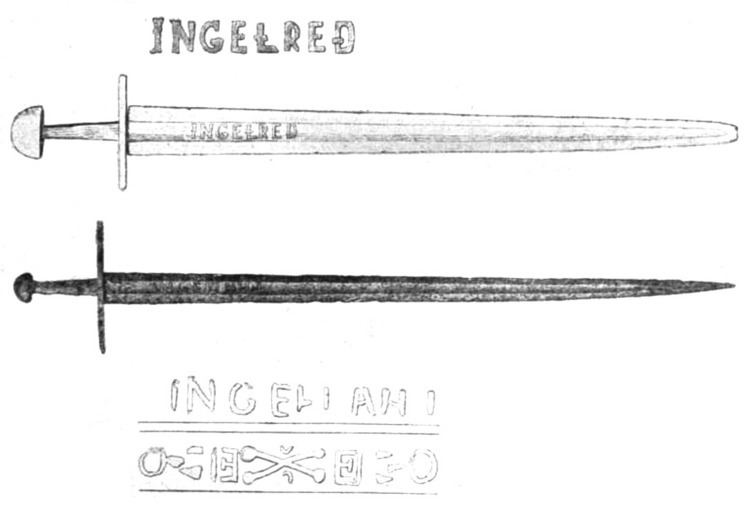 | ||
The Ingelrii group of Viking swords are characterised by their blade inscriptions, stylised as INGELRII, INGELRD or INGELRILT. They are somewhat younger than the better known (and better attested) Ulfberht group, and they continued to be made until slightly later, that is, into the 12th century.
Other variations of the inscription have also been found: INGRLRIIMEFECIT on a sword found by Sigridsholm, Sweden, and INGELRIH FECIT on a sword found in Flemma, Norway.
By 1951, Oakeshott had identified thirteen such swords, and had suggested that another, now at Wisbech Museum, is also an Ingelrii, a possibility also considered by Davidson.
Known Ingelrii swords
References
Ingelrii Wikipedia(Text) CC BY-SA
